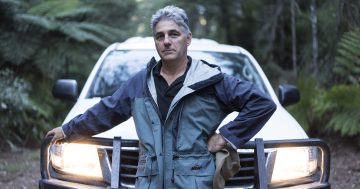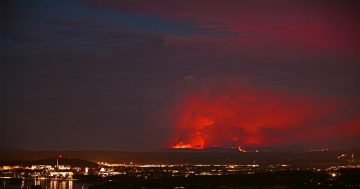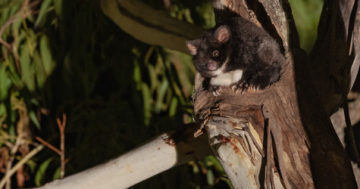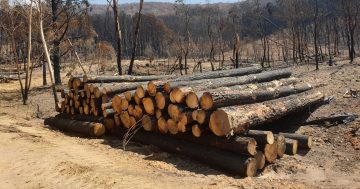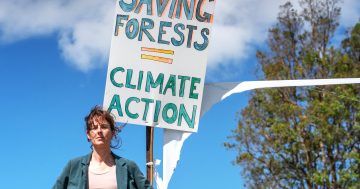
An endangered Greater Glider. Photo: Pavel German.
One of Australia’s leading experts on landscape ecology and biodiversity has warned that salvage logging and bushfire clean-up may hinder the ability of animals and ecosystems to bounce back after the fire crisis.
Professor David Lindenmayer said that bushland can still provide a habitat for animals that have survived the blaze, and trees that may be removed during salvage operations have the potential to resprout after fires.
Professor Lindenmayer is an expert in landscape ecology, forestry management and conservation and biodiversity at the Australian National University (ANU). He says action must be taken to ensure the survival of local species.
“We should resist the temptation to clean up,” he told Region Media.
“It looks as though half the distribution of the southern populations of the Greater Glider has been extensively damaged, so there will be a big effect on that species.
“We are talking about numbers in the tens of thousands, and the impact of the bushfires can last many, many decades, with numbers continuing to decline, which is what happened after the 2009 Victoria fires.
“We are still seeing the impacts of that fire 10 years later.
“The Corroboree Frog and Alpine She-oak Skink have also been affected, so there is a range of species that are doing badly as a consequence of the fires.
“A lot of people think ‘oh look there is a dead tree, let’s clean it up’, when in fact many of these trees have the ability to resprout and recover.
“Salvage logging is a really negative thing to do. The fire wipes out habitats so animals have no food, they are left without shelter, and now we have salvage logging which occurs after these fires.”
Salvage logging in the aftermath of fires can further impact already threatened species by removing possible refuges, as feral animals and selective logging are already proving to be an existential threat to some animals.
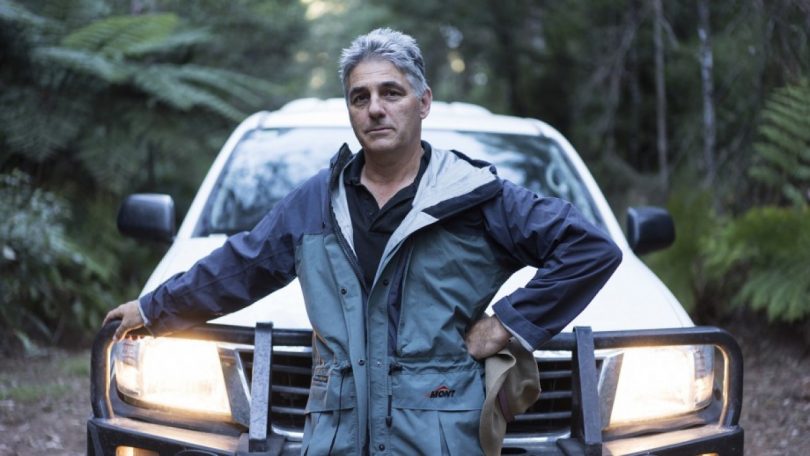
Professor David Lindenmayer. Photo: ANU.
“You have the fire, which directly kills many animals, and then what happens is that after the fires you can have the effects of feral animals like possums, cats, horses and deer that can have really major impacts on ecosystems as well,” Professor Lindenmayer said.
“An example is horses in the high country. Those animals have hard hooves which have a big impact on very fire-sensitive soils, native fish, frogs and reptiles.
“We should not be salvage logging and we should be involved in controlling these feral animals.”
The forest industry and CFMMEU have already called for the selective logging of national parks to reduce fuel loads, a proposal that’s been rejected by conservation experts.
Professor Lindenmayer says unburnt vegetation must be protected at all costs.
“You have to protect these areas, and areas of unburnt vegetation because they are critical refuges,” he told Region Media.
“If we lose the Greater Glider, we lose an animal that has a key role in the food chain. It is food for iconic animals like the Powerful Owl, so there is a big knock-on effect if we lose some of these key species in the ecosystem.
“The productivity of forests will start to fall away, and forests are where we get our water from and carbon storage for climate change, and essentially the system starts to unravel. Key things that play a big role in the function of the system start to drop out.”
Although trees may look burnt and dead, they are still important carbon vaults, which is why we need to be careful about salvage logging operations.
“For many of these forests when the fire comes through the green leaves get burnt off the trees but the trunk is still there, which is where most of the carbon is,” Professor Lindenmayer said.
“Most of the root system is still there and is not killed, so what happens is they are regrowing and begin to absorb carbon again.
“We studied the trees after the fires in 2009 and roughly 10 per cent of the carbon was lost, but the rest of the carbon was still in the system. It is really important that this carbon is stored.
“The fires in Victorian forests, some of those areas burnt at close to 80,000 kilowatts per square metre, which was getting close to what the intensity of the fires around Hiroshima were.
“Still, we had 85 to 90 per cent of the carbon still there.”
Original Article published by Dominic Giannini on The RiotACT.







